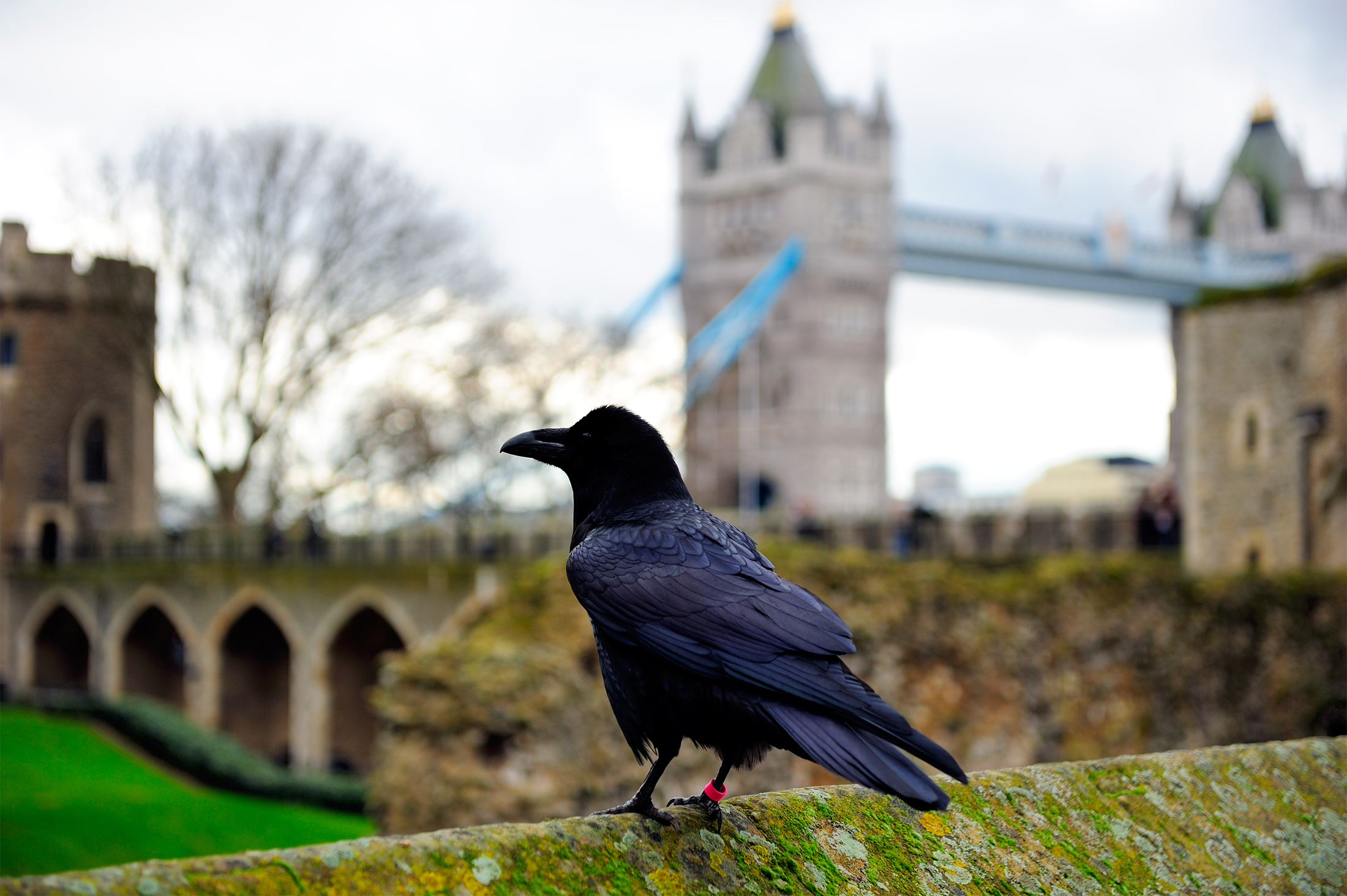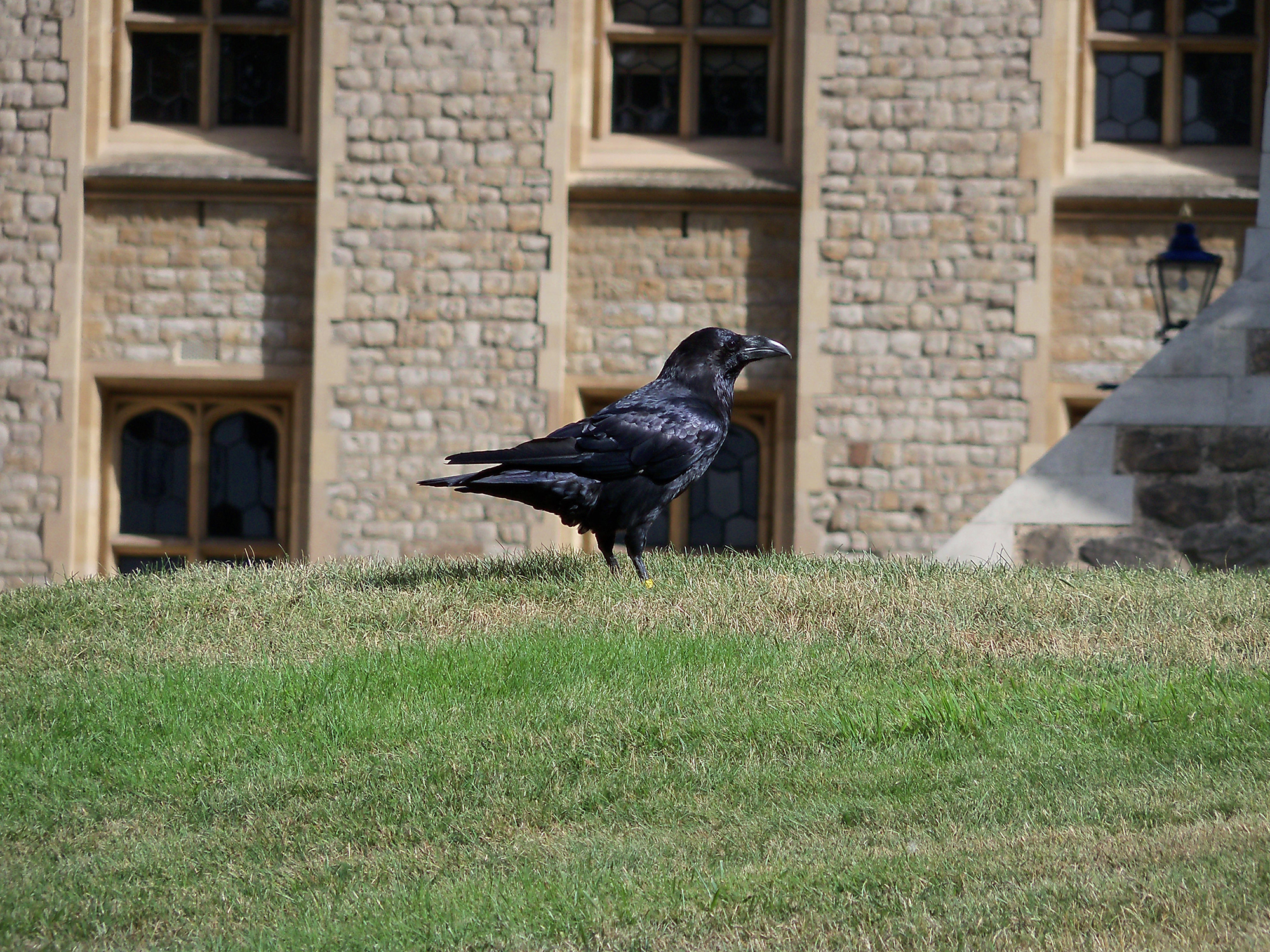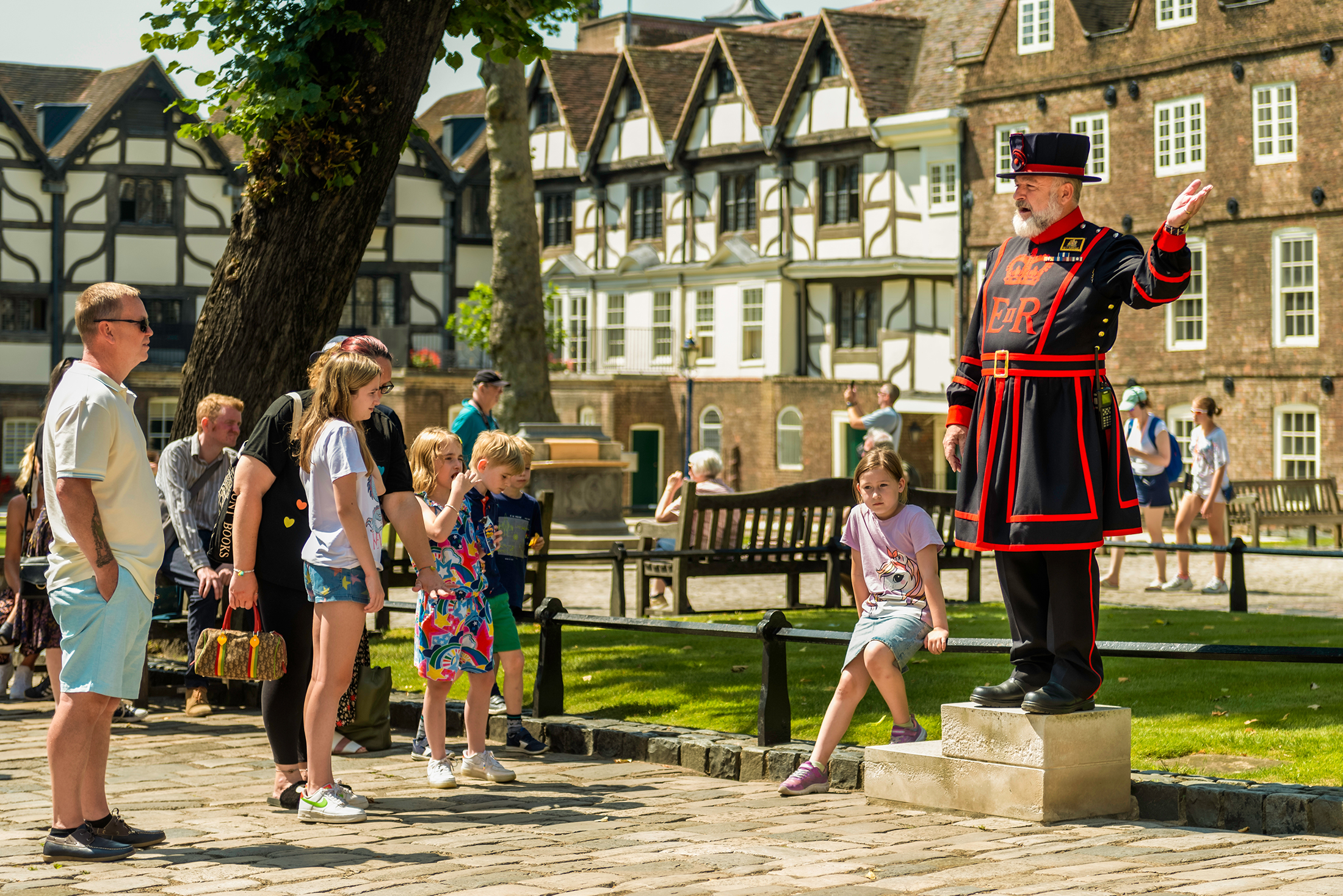The Ravens of
the Tower of London
the Tower of London

The captivating tale of the Ravens at the Tower of London weaves together legend, tradition, and practicality. People believe that the fate of the Tower of London is closely tied to the presence of the Ravens, and this cherished legend and superstition has been passed down for centuries. The Tower Ravens have become cultural symbols of the Tower of London and, by extension, the British monarchy and the nation itself. They are often associated with the rich history and traditions of the Tower.
The Tower of London
The Tower of London is a historic castle on the north bank of the River Thames in central London, officially known as His Majesty's Royal Palace and Fortress. In the latter part of 1066, William the Conqueror founded an awe-inspiring structure that would become an integral part of England's history. The Tower has served various purposes throughout history, including as a royal palace, prison, treasury, and execution site. Today, the Tower is listed as a UNESCO World Heritage Site, a testament to its timeless grandeur and architectural excellence. Visitors from all over the world flock to this magnificent landmark to marvel at its rich legacy and the intricate details that make it a true masterpiece.

The Tower of London Ravens
The Tower of London is also renown worldwide for its resident Ravens, which are said to be guardians of the Tower and the monarchy. The Tower Ravens contribute to the allure and mystique of this iconic landmark, adding to its historical significance as a site steeped in folklore and legend. These black-feathered birds played a critical role in preserving the historical and cultural traditions of the Tower, making their importance undeniable. They have become symbolic protectors of the Tower, and their watchful gaze over the centuries helped preserve the Tower's historical legacy.
The Legend of the Tower of London Ravens
Although steeped in legend and myth, the Ravens' role in the Tower's history has a practical reason. Historically, people kept ravens at the Tower as scavengers, helping keep the grounds clean and debris-free. The Legend of the Ravens of the Tower of London is a fascinating and enduring tale that adds an aura of mystique to this historic site. According to legend, "If the ravens leave the Tower, the kingdom will fall."The legend has several variations and interpretations, but one popular story often attributed to its creation revolves around King Charles II in the 17th century.

The Legend of the Tower Ravens is told...
During King Charles II's reign in the 17th century, he became concerned about the growing number of ravens at the Tower of London. In an effort to address the matter, he ordered all the ravens to be removed from the Tower grounds, believing them to be a nuisance and a threat to the cleanliness of the Tower. As the ravens were captured and expelled, a series of unfortunate events followed, including a series of mishaps and misfortunes.
Alarmed by these events and concerned about a local myth that suggested his kingdom would fall if the ravens were removed, King Charles II quickly reversed his decision and ordered the ravens to be brought back to the Tower. The ravens returned, now as dignified Tower Ravens, and with their presence, the misfortunes ceased.
The specific details of the "series of mishaps and misfortunes" that allegedly followed the removal of the ravens during King Charles II's reign are not well-documented in historical records. The story is more of a legend or folklore associated with the Tower of London rather than a verifiable historical account. As such, the specific events that were said to have occurred during the brief absence of the Tower Ravens are often left to the realm of imagination and storytelling.
Regardless of the origin or variation of the tale, the legend emphasizes the belief that the kingdom or the Tower itself would face misfortune or fall into a state of disrepair without the protection of its Ravens. The absence of specific historical details in this legend allows for creative interpretations and has contributed to the enduring mystery and fascination surrounding the legend of the Tower Ravens.

The story, although possibly fictitious or embellished over time, became one of the central narratives surrounding the Tower Ravens and their connection to the fate of the kingdom. It underscores the importance of preserving the tradition of keeping Ravens at the Tower of London to ensure the safety and prosperity of the realm.
So, today, to continue to prevent catastrophic consequences foretold by legend, it's believed there must always be at least six Ravens residing at the Tower. As a result, the Tower has a group of seven resident Ravens, one spare, carefully cared for and protected to ensure their continued presence.
The Ravenmaster at the Tower of London
The Ravens of the Tower of London are cared for by a designated guardian known as the "Ravenmaster." The Ravenmaster is a ceremonial position responsible for the well-being, feeding, and overall care of the Tower Ravens. The Ravenmaster ensures that the ravens are healthy, well-fed, and have a safe environment within the Tower grounds.
The Ravenmaster's role is not just about the physical care of the birds; it also involves preserving the traditions and superstitions associated with the Tower Ravens. The Ravenmaster helps maintain the presence of at least six ravens at the Tower to uphold the legend that "if the ravens leave the Tower, the kingdom will fall." This role combines practical bird-keeping, historical preservation, and storytelling elements, making it a unique and prestigious position.
The Ravenmaster's daily duties include:
- Providing the Tower Ravens with their food.
- Ensuring their living conditions are suitable.
- Monitoring their health.
They also interact with visitors to educate them about the Ravens and the legend, adding an extra layer of engagement and storytelling to the visitor experience at the Tower. The Tower Ravens serve an academic purpose, as they offer opportunities for learning about these intelligent birds and their behaviors. The presence of the birds provides a chance to educate visitors about avian conservation and the importance of protecting wildlife.

Yeoman Warders, 'Beefeaters,' and the Ravens of the Tower of London
The Yeoman Warders, commonly known as Beefeaters, and the Ravens of the Tower of London are two iconic elements of the Tower's history and tradition. The Yeoman Warders, or Beefeaters, also keep an eye over the Tower Ravens and ensure they are granted their due respect on the Tower grounds.
While the Beefeaters and Ravens serve different roles at the Tower of London, they contribute to this iconic landmark's rich history and unique character. The Beefeaters help preserve and share the Tower's history with visitors. At the same time, the Ravens add a layer of folklore and mystique to the site, making the Tower of London a historic castle and a living repository of legends and traditions.
By keeping the Ravens at the Tower, the British monarchy and the Tower's management uphold a centuries-old tradition that reinforces the site's cultural significance, helping to maintain the Tower's connection to its historical past and its role as a symbol of royal authority. The importance of the Tower of London Ravens lies in their connection to a captivating legend, their cultural significance, their role as a tourist attraction, their preservation of history, their dedicated care, and their contribution to education. These birds represent the Tower and this iconic historic landmark's enduring traditions and mystique.
Frequently Asked Questions About the Tower of London Ravens
The Ravens of the Tower of London are a group of seven resident birds kept at the Tower to uphold a centuries-old legend.
"If the Ravens leave the Tower, the kingdom will fall."
This legend is central to the story surrounding the Ravens of the Tower of London. It adds a sense of mystery, tradition, and superstition to the Tower's history, emphasizing the importance of maintaining a group of at least six ravens within the Tower's walls to safeguard the kingdom.
The Tower must always maintain at least six Ravens within its walls to prevent the catastrophic fall of the kingdom. Today, there are seven resident birds at the tower.
The Ravens are cared for by a designated guardian known as the Ravenmaster. The Ravenmaster is responsible for their well-being, feeding, and overall care.
The Tower of London, a historic fortress and former royal palace, is renowned worldwide for its unique and priceless collection of the Crown Jewels of the United Kingdom. The Imperial State Crown, the Sovereign's Sceptre, and the Koh-i-Noor diamond are just a few of the precious items that are on display for visitors to admire. This world-renowned collection of 23,578 gemstones is part of the Royal Collection and still features in royal ceremonies today.
Ravens are opportunistic feeders with a varied diet. They are omnivores, which means they consume both plant and animal matter. Ravens are highly intelligent birds adapted to finding and exploiting various food sources, making them successful survivors in various environments. Their diverse diet allows them to adapt to changing conditions and utilize available resources.
The Ravens at the Tower of London are fed raw meat, blood-soaked bird biscuits, a weekly egg, the occasional whole rabbit, and scraps of fried bread.
Ravens are known for their remarkable vocalizations, which include a wide range of calls and sounds. While they don't have the same capacity for complex speech as humans, they can mimic certain sounds and even imitate human speech to some extent.
However, their mimicry is typically not as precise or complex as that of parrots, which are renowned for replicating human speech with greater clarity. Ravens' vocalizations are more geared toward their social interactions, signaling danger, and communicating with other ravens.
Their calls can be quite diverse, and they use them effectively for a range of social and survival-related purposes. While they may not "talk" in the same way humans do, their vocal abilities are fascinating and play an essential role in their communication and social interactions.











